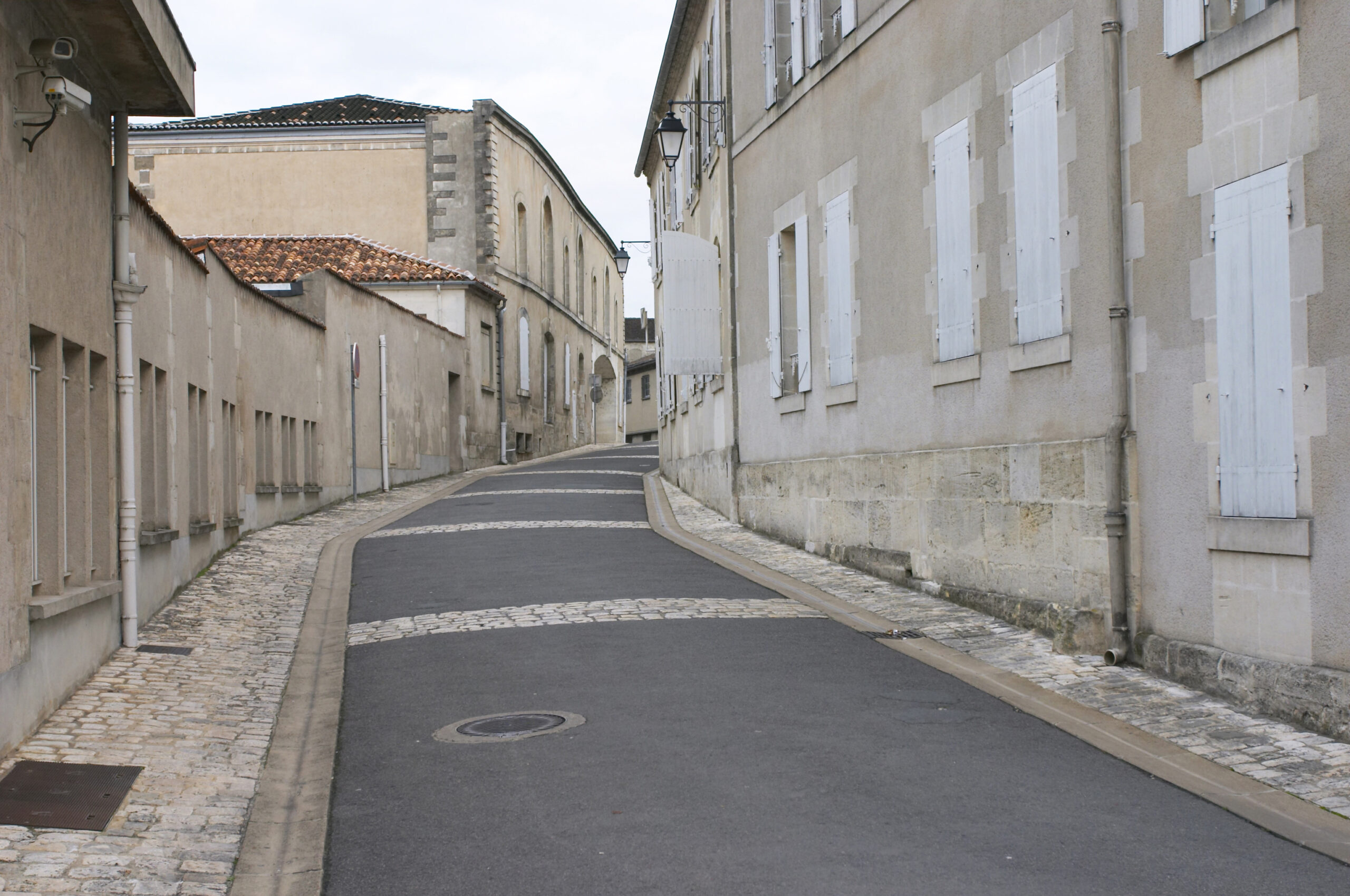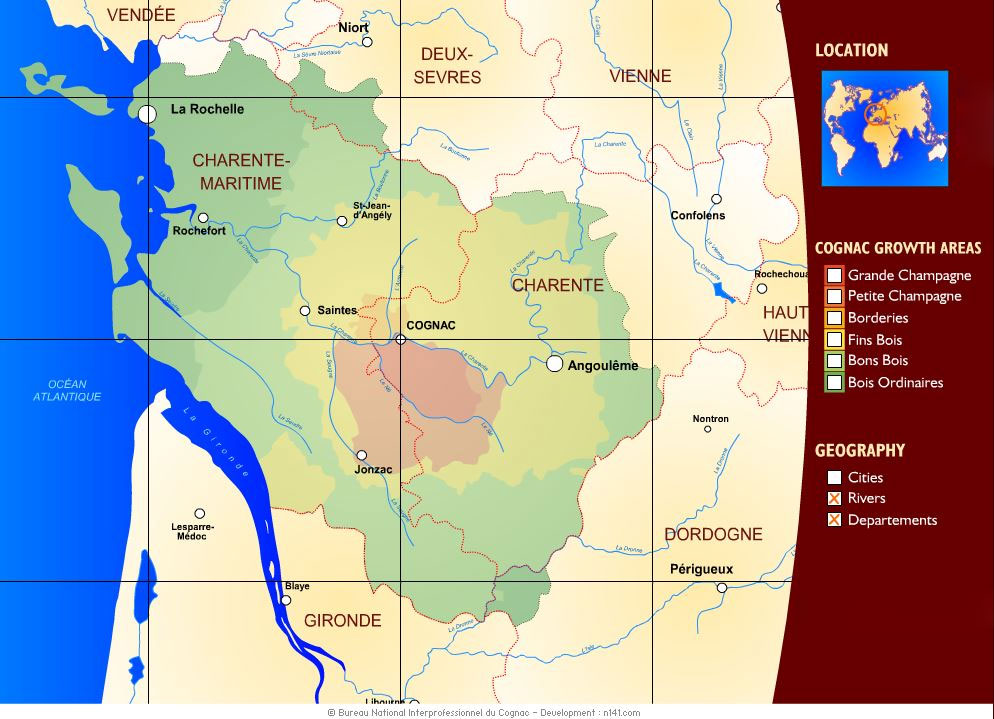Today, for a brandy to be considered ‘Cognac’ it must originate in the Cognac Appellation d’origine contrôlée (AOC) that was established in 1936. The grapes used to make Cognac must come from one of the six designated growing areas or ‘crus’ located in the Cognac region. The six Cognac crus include: Borderies, Fins Bois (the largest appellation) Bons Bois and Bois Ordinaires, Bois à terroirs, Grande Champagne and Petite Champagne.
In addition to the requirement that the grapes must come from one of the six approved appellations, Cognac must also must be made from grapes must be blended from 90% eau de vie from Ugni Blanc, Folle Blanche and Colombard grapes with up to 10% Folignan, Jurancon blanc, Blanc Rame, Montils or Semillon grapes.
If a brandy producer located in the Cognac AOC follows all BINC standards, including meeting production and distillation requirements, their brandy can officially be called “Cognac”.
Cognac before The Cognac AOC
In the mid-16th century, eaux-de-vie or grape brandy began to be produced in the Charente region of France. The first known reference to “Cognac” meaning brandy appeared in a sales contract in 1617. Within a century, eaux-de-vie from the Charente had become the most desired eaux-de vie in the world. The production of Folle Blanche wine for drinking and export had virtually ceased as grapes varieties of the Charente were coveted for their characteristics that lent themselves far more suitable for distillation than mere fermentation. By the early 1700’s exporting eaux- de-vie from the Charente was big business.
Brandy, Eaux-De-Vie, Cognac and Best Cognac
The finest eaux-de-vie came from the areas closest to the town of Cognac (modern day Borderies and the Petit and Grande Champagne appellations). Eaux-de-vie from the region called Grand Champagne today, was considered the finest brandy in the early 18th century. As one traveled away from the town of Cognac, the quality of the eaux-de-vie was considered increasingly diminished.
Eaux-de-vie that came from what is now considered the Fins Bois appellation was considered of lesser quality, but still high quality, and was called “Cognac”. Eaux-de-vie that came from the north-western part of Fins Bois was called “Best Cognac”. The eaux-de-vie from area now called Bons Bois west and south of Fins Bois was considered of less quality still than that of Fins Bois, but still called “Cognac”. Finally, the eaux-de-vie from the areas closest to the Atlantic Ocean and from the Île de Ré and Île d’Oléron (modern day Bois Ordinaires) was considered inferior and not called ‘Cognac’.
For the most part in the early 1700’s “Cognac” was unaged eaux-de-vie. Cognac Houses Martell and Rémy Martin, however, began experimenting with aging eaux-de-vie in oak barrels. The unaged Cognac was called “Young” and the barrel aged Cognac called “Old”. It would be another century before the designation V.S.O.P. (Very Special Old Pale) cognac would appear when Hennessy produced a V.S.O.P cognac in 1818 at the request of The Prince of Wales and future King George IV of Great Britain.
Source of Cognac before The Cognac AOC and Brandy, Eaux-De-Vie, Cognac and Best Cognac material: Cognac by Kyle Jarrard ©2005


